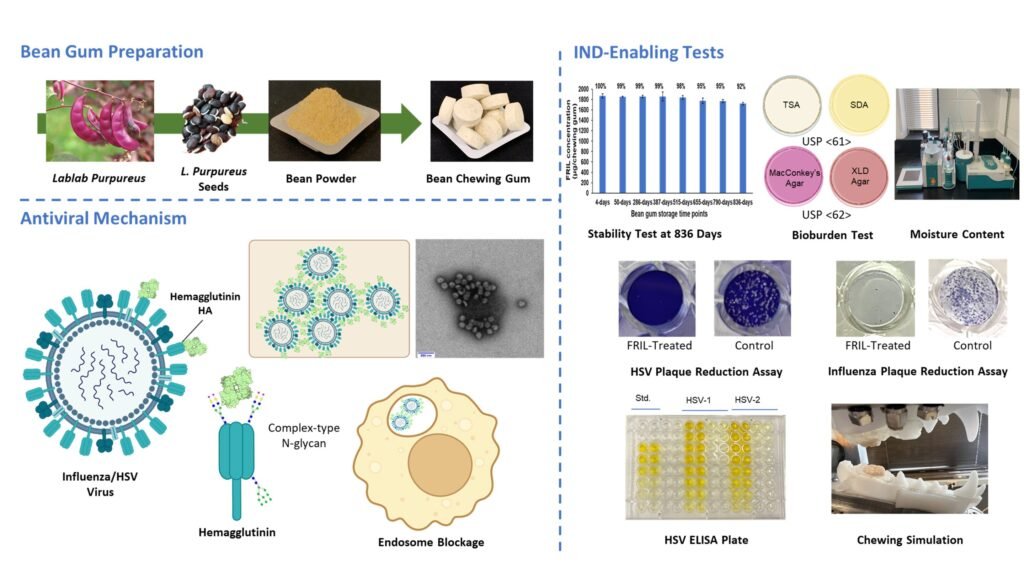In today’s interconnected world, infectious diseases continue to pose a significant threat, as evidenced by past pandemics and outbreaks of various viruses such as H1N1, SARS, Ebola, Zika, and bird flu. These outbreaks have had profound global health and economic consequences, emphasizing the need for innovative solutions to combat viral diseases.
One such innovative approach is the development of an antiviral chewing gum that aims to reduce the transmission of influenza and herpes simplex viruses. Researchers at the School of Dental Medicine at the University of Pennsylvania, in collaboration with partners in Finland, have conducted a groundbreaking study published in Molecular Therapy.
The study builds upon previous research that showed promising results in reducing SARS-CoV-2 levels in COVID-19 patient samples. By utilizing a chewing gum made from lablab beans, which naturally contain an antiviral trap protein called FRIL, the researchers were able to effectively neutralize herpes simplex viruses (HSV-1 and HSV-2) and influenza A strains (H1N1 and H3N2). The chewing gum formulation allowed for the consistent release of FRIL at sites of viral infection, resulting in a significant reduction of viral loads.
The researchers found that a small amount of the bean gum tablet was sufficient to reduce viral loads by more than 95%, demonstrating its efficacy in combating viral infections. Importantly, the gum was prepared as a clinical-grade drug product, meeting FDA specifications for drug products and proving to be safe for use.
Looking ahead, the researchers are exploring the use of lablab bean powder to address the current bird flu outbreak, which has had a significant impact in North America. By leveraging the antiviral properties of bean powder, the researchers aim to control bird flu in birds, which in turn can help prevent human infections.
The development of the antiviral chewing gum represents a promising advancement in the fight against viral diseases. With its ability to target viral transmission in the oral cavity, this innovative approach offers new possibilities for reducing the spread of influenza and herpes simplex viruses. The researchers are optimistic about the potential of this technology and are eager to conduct human clinical studies to further evaluate its effectiveness in minimizing virus transmission.
Overall, the development of the antiviral chewing gum highlights the importance of innovative approaches in combating infectious diseases and underscores the potential of natural products in preventing viral infections and transmission. This groundbreaking research paves the way for new strategies in controlling the spread of viruses and improving global health outcomes.


